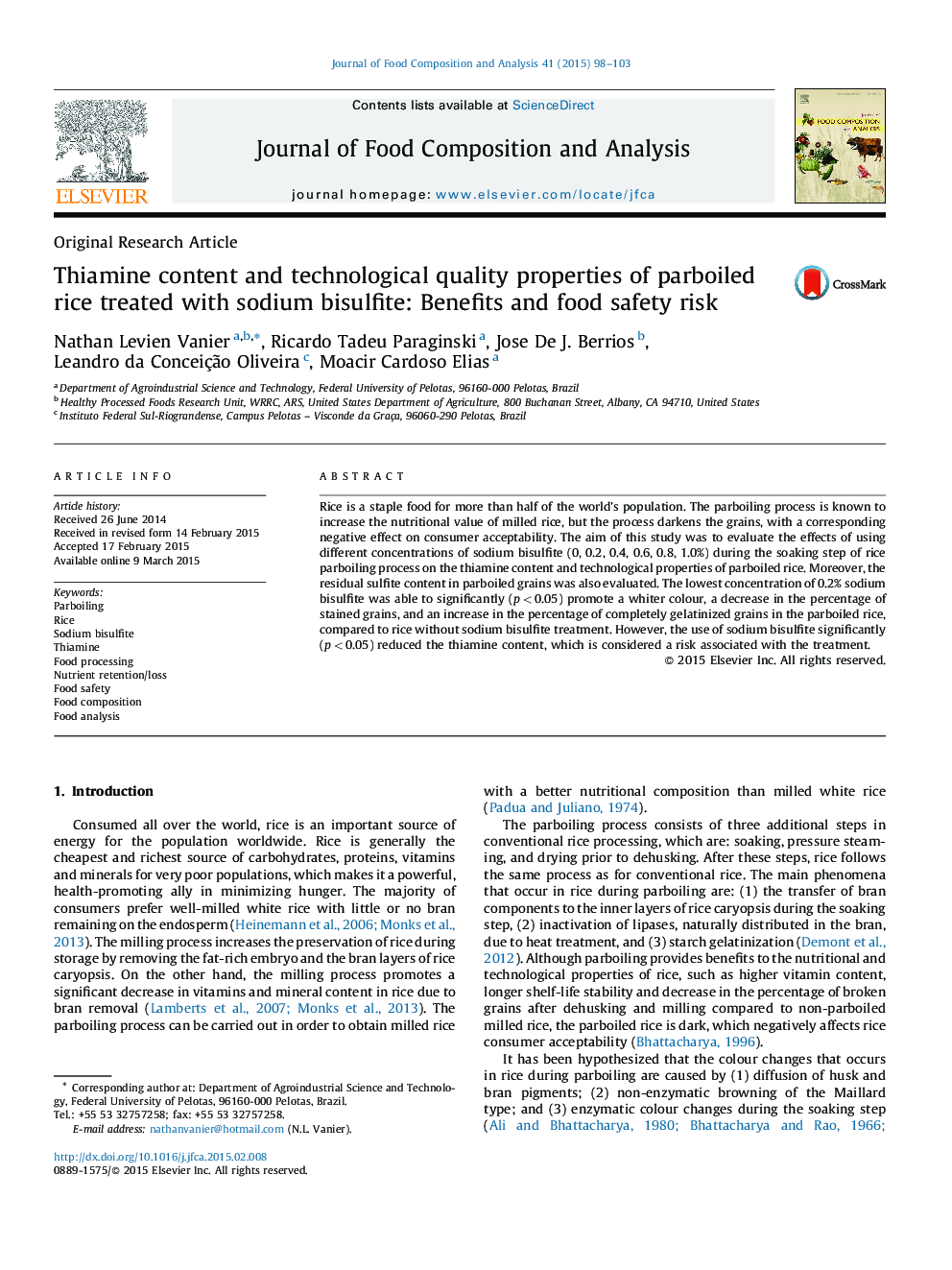| کد مقاله | کد نشریه | سال انتشار | مقاله انگلیسی | نسخه تمام متن |
|---|---|---|---|---|
| 1218236 | 1494501 | 2015 | 6 صفحه PDF | دانلود رایگان |
• Sodium bisulfite was used during soaking step of rice parboiling.
• 0.2% sodium bisulfite was able to improve technological properties of parboiled rice.
• Sodium bisulfite treatment significantly reduced thiamine content of parboiled rice.
Rice is a staple food for more than half of the world's population. The parboiling process is known to increase the nutritional value of milled rice, but the process darkens the grains, with a corresponding negative effect on consumer acceptability. The aim of this study was to evaluate the effects of using different concentrations of sodium bisulfite (0, 0.2, 0.4, 0.6, 0.8, 1.0%) during the soaking step of rice parboiling process on the thiamine content and technological properties of parboiled rice. Moreover, the residual sulfite content in parboiled grains was also evaluated. The lowest concentration of 0.2% sodium bisulfite was able to significantly (p < 0.05) promote a whiter colour, a decrease in the percentage of stained grains, and an increase in the percentage of completely gelatinized grains in the parboiled rice, compared to rice without sodium bisulfite treatment. However, the use of sodium bisulfite significantly (p < 0.05) reduced the thiamine content, which is considered a risk associated with the treatment.
Journal: Journal of Food Composition and Analysis - Volume 41, August 2015, Pages 98–103
